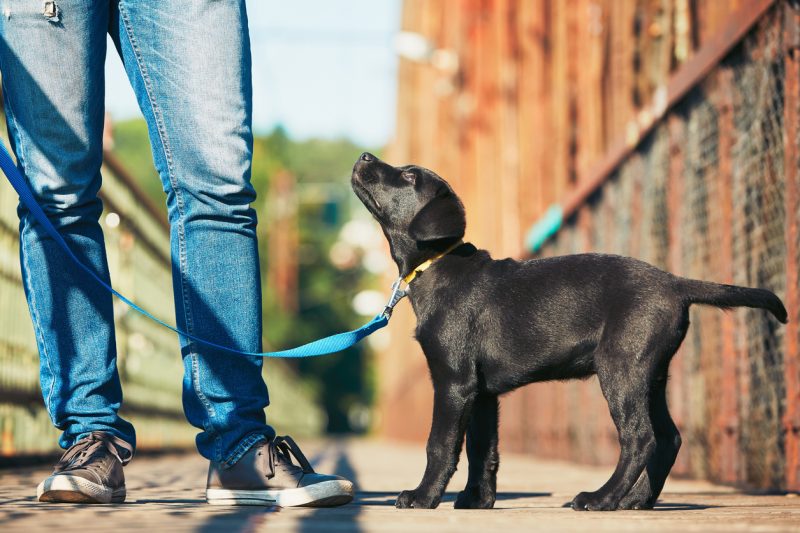March 23 was National Puppy Day, a day to promote puppy adoption from rescues and shelters (and look at cute puppy pictures and videos on the internet, of course). If you recently added a new puppy to your pack, here are some things to know about your puppy’s emotional health.
Puppies Need More than Socialization
It’s widely recognized that puppy socialization involves meeting new people, other animals and being introduced to new locations and objects so that the puppy isn’t fearful later in life. Often pet parents focus on the physical nature of socialization like taking their puppy to pet-friendly stores, letting their puppy play with other dogs and handling their puppy’s feet, mouth and body. These are all important parts to a puppy’s development, but did you know that training also plays a vital role in supporting your puppy’s emotional growth and development?
As a puppy parent, your role is to help your puppy learn how to thrive in a new home, communicate safely and effectively with you and other animals, and become comfortable with potential stressors they may face as a dog in today’s world. Here are a few key training areas to focus on to boost your puppy’s emotional well-being.
Puppies are in a prime developmental period to learn new behaviors! Teaching your puppy basic cues will help support the socialization process, give you and your puppy a way to communicate and support your puppy’s confidence. Basic training is also a great mental exercise that not only tires your puppy out but teaches problem-solving skills and increases cognitive development. This has shown to decrease stress levels in dogs as well. Starting young and keeping up with training throughout your pup’s life is vital to preventing unwanted behaviors.
Basic Obedience
Top Tips:
- Start the basics at home using positive reinforcement. Begin with touch, recall, eye contact and sit. Check out this helpful video on dog training with positive reinforcement
- Enroll in a puppy group class. Bonus: this also supports the human and puppy socialization process as well as desensitizing your puppy to new places, smells, sounds and objects
- For guidance on successful training sessions, check out January’s post on Top Tips for Fun Training Sessions
Separation Training
Dogs are social creatures and typically prefer to socialize with humans and other animals. While we want to establish a bond between you and your puppy, your puppy also needs to learn independence to avoid developing separation issues that can cause undue stress and behavior problems like barking, anxiety or destruction when left alone. Separation-related disorders are a common issue among companion dogs and affect a dog’s stress levels.
Top Tips:
- Practice slowly getting your puppy used to being alone. Use short periods of alone time to start and include a food or toy to help alleviate stress
- This can be done with crate-training and/or gate-training – review Dr. Katrina Warren’s video on how to crate train your puppy
- Because separation training promotes independence in developing puppies, reward for signs of independence. Separation training promotes independence in developing puppies – if your puppy chooses to relax on their own, whether in the crate, on the floor or on their bed, reward this behavior
Sensory Experiences
In addition to meeting a variety of humans, it’s important to introduce your puppy to objects, places, smells and sounds. This desensitizes, or slowly introduces a puppy to stimuli in a controlled manner within their fear threshold. Creating new sensory experiences also aids in problem-solving behavior and decreases stress levels when a puppy is faced with a challenge. This form of desensitization also diminishes the likelihood of phobias, fears and general anxiety from occurring during adulthood.
Top Tips:
- Choose different neighborhood routes for your puppy’s walks and vary the time of day you walk
- Drop in at your veterinary clinic for a quick hello with no examination or vaccinations required
- Enlist the help of a desensitization aid that you can download to your phone, like TrainAway
Additional Tips and Resources
- Keep a log of your puppy’s interactions with new people, places, and objects. This can help you identify patterns in behavior and areas that your puppy may need additional work
- If your puppy displays fearful or unwanted behavior that is not improving, seek help from a certified dog trainer
- For more tricks on socialization and training, read this helpful article from the Whole Dog Journal

